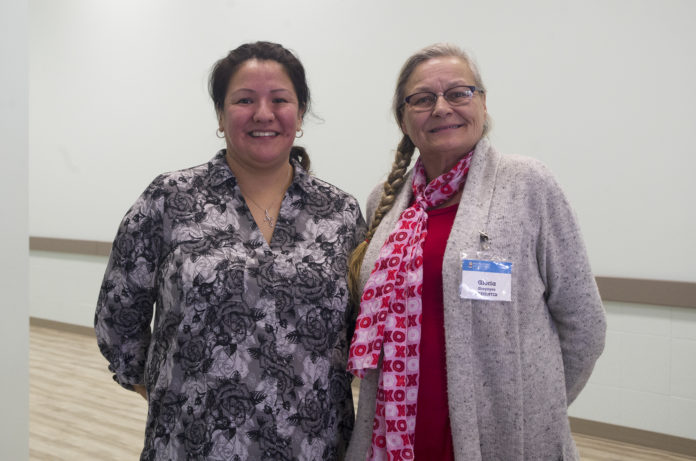
As a child, Bonnie Rockthunder had little opportunity to learn the Cree language.
As an adult, she’s dedicated to making sure that doesn’t happen to today’s youth.
Rockthuder was one of several educators, students and elders who came out for the third annual Elders’ Gathering at Plaza 88 on March 9.
Held in collaboration with the First Nations University of Canada (FNUC) and National Centre for Collaboration in Indigenous Education (NCCIE), the gathering helps provide a solid foundation for developing educational practices in Indigenous organizations and communities.
The 2019 gathering focused on language, which has been a point of priority for educators like Rockthunder, who currently serves as the academic vice-president at FNUC, and is one of two co-leaders at the NCCIE.
“I’m a grandmother now and I see that importance of wanting to teach my granddaughter Cree,” she explained. “I myself don’t speak the language, but I’m slowly learning. I want that to be something I pass down to her.”
Rockthunder views keeping Indigenous languages alive as a constant uphill battle. You can’t force people to learn the language, she said, and it’s sometimes difficult to convince people how important it is. It can be even harder to find fluent speakers to act as instructors.
Gatherings like this one in Prince Albert are helpful because Indigenous elders are often the only ones who speak Cree well enough to pass it along. Rockthunder says their input is vital if Cree is to become widely spoken across the prairies.
“We just need to bring more of the fluent speakers and the people who do want to learn together,” she said. “(With) the gatherings that we’ve been having, I’m hearing a lot of the positive comments about how we need more of this to happen. We need more of it in this community or in that community. With First Nations University, we’re doing what we can to help that, to bring it out into the open.”
For many educators, teaching Cree has to start on the land. Presenters at Saturday’s gathering, like Gloria Greyeyes and Karen Morin from Muskeg Lake Kihiw Waciston School, say oral and outdoor approaches to teaching Cree have been more successful than the traditional classroom methods. They’re urging more and more teachers to get their students out of the classroom, and out on to the land.
“Going outside, instead of being in a classroom, is such a huge difference with the kids at our school because they’re K-6 kids. They’re all full of energy and everything,” Morin said. “They’re hyper in the classroom but when they go outside, you should see how calm they are. You can tell the difference. Right now, we’re cooped up in a classroom right now because it’s winter, but just wait until spring rolls around.”
Morin has taught Cree for 18 years. She originally began teaching through common methods such as books and paper, but switched to oral teaching after a suggestion from a visiting elder in 2002. After years of switching back and forth between the two methods, she said she’s found more success with land-based education. She has no desire to return to books and papers.
“It’s working for me with the K-6 (students), rather than just trying to teach paper Cree, like the way you would teach English, because I myself was never taught like that,” she said. “I was just spoken to, and that’s it.”
However, there have been challenges along the way. Although Greyeyes and Morin see a lot of enthusiasm in Indigenous youth, adults aren’t always happy with their methods.
“When I first started this, somebody came to me from the community and said, ‘are you trying to teach our kids (practices from) 150 years ago?’” said Greyeyes, Muskeg Lake’s community school coordinator. “I said, ‘no, we were already colonized. I want to teach them 500 years ago.’”
Despite those challenges, both are very optimistic about the future. They’re confident that with the right teaching methods, more and more youth will become confident Cree speakers, and create a cultural shift that will help the language survive. However, it’s going to take time and commitment, and help from the elders who still speak Cree fluently.
“It’s such a feel good thing, to be able to give the children the opportunities that we never had until we were taken by our grandmothers,” Greyeyes said. “Our parents tried so hard for us to succeed in the world that we were going to be living in they forgot to teach us to be part of who we are. Now, us being in that position to give that to them, it’s just a feel good feeling, and any time anything’s good, it spreads.”

